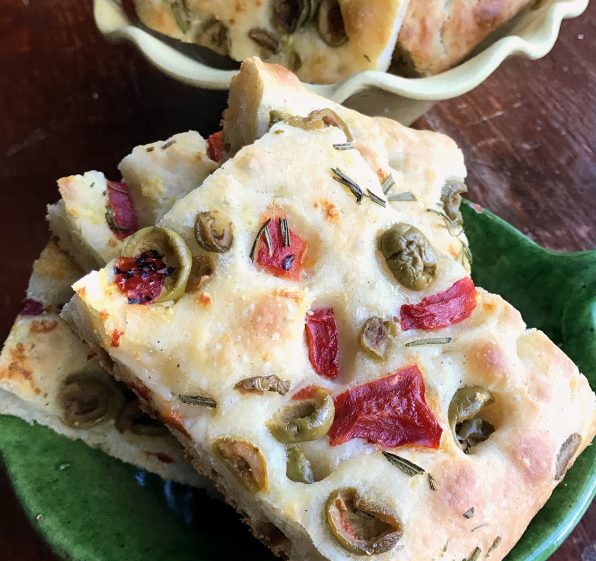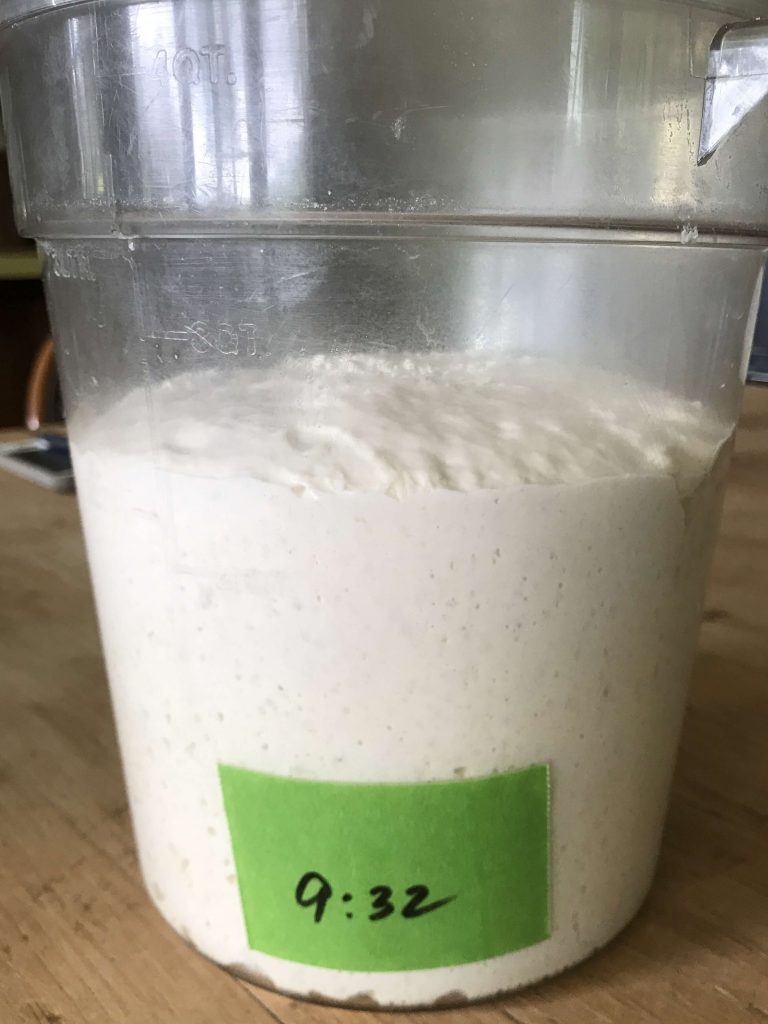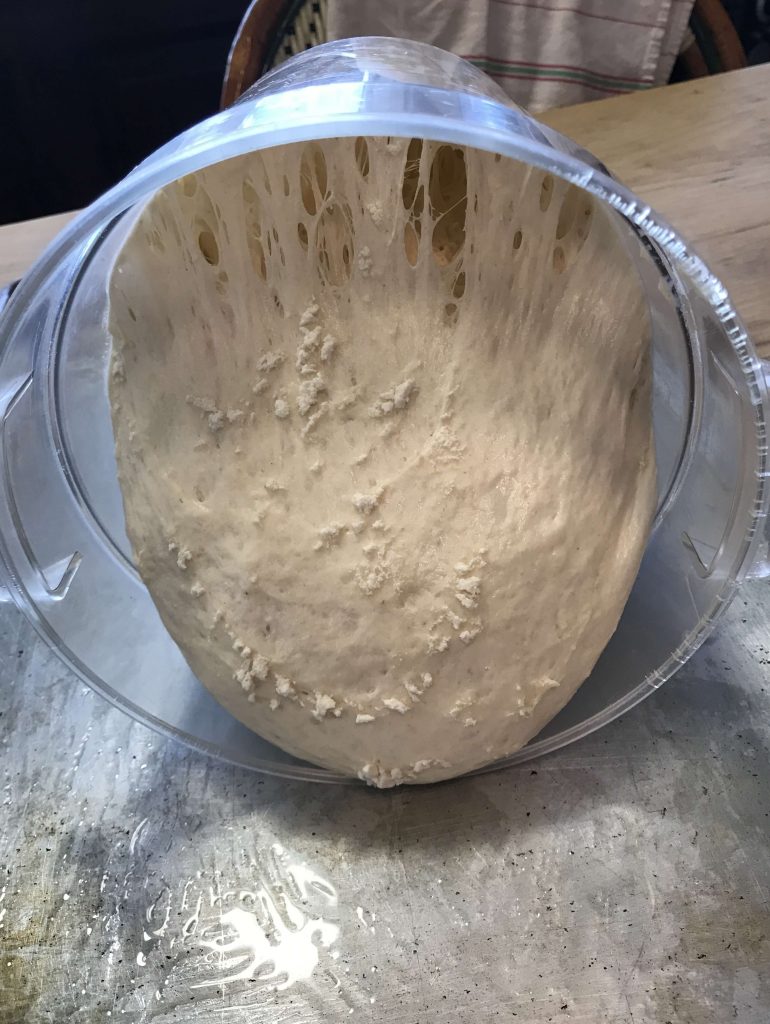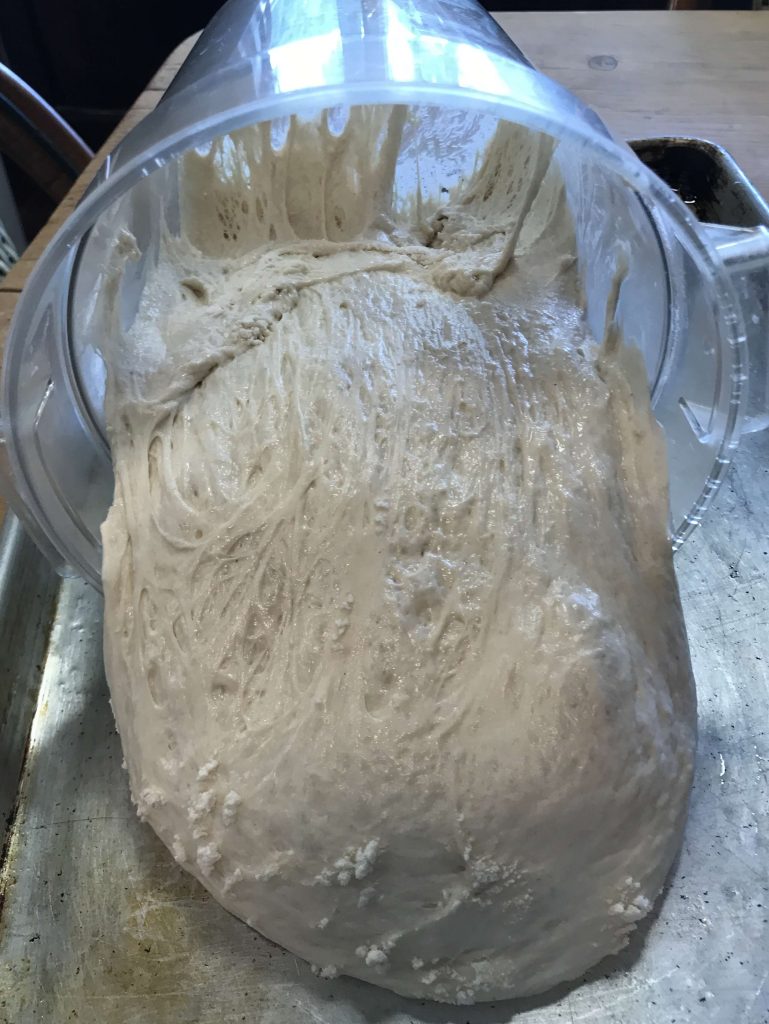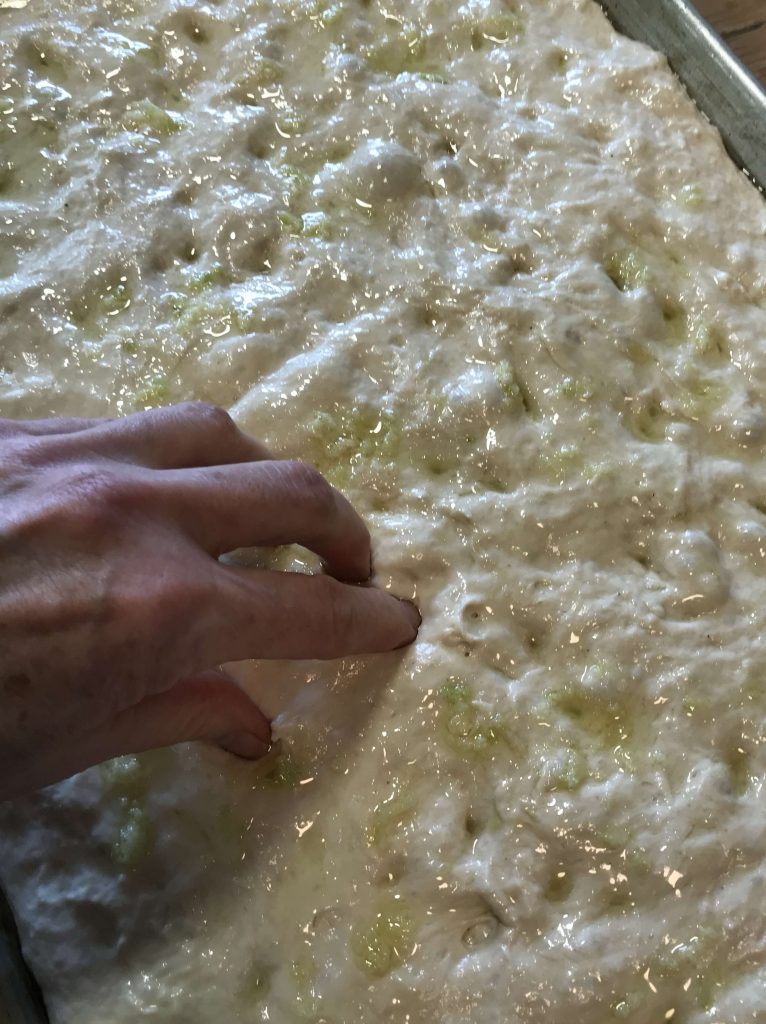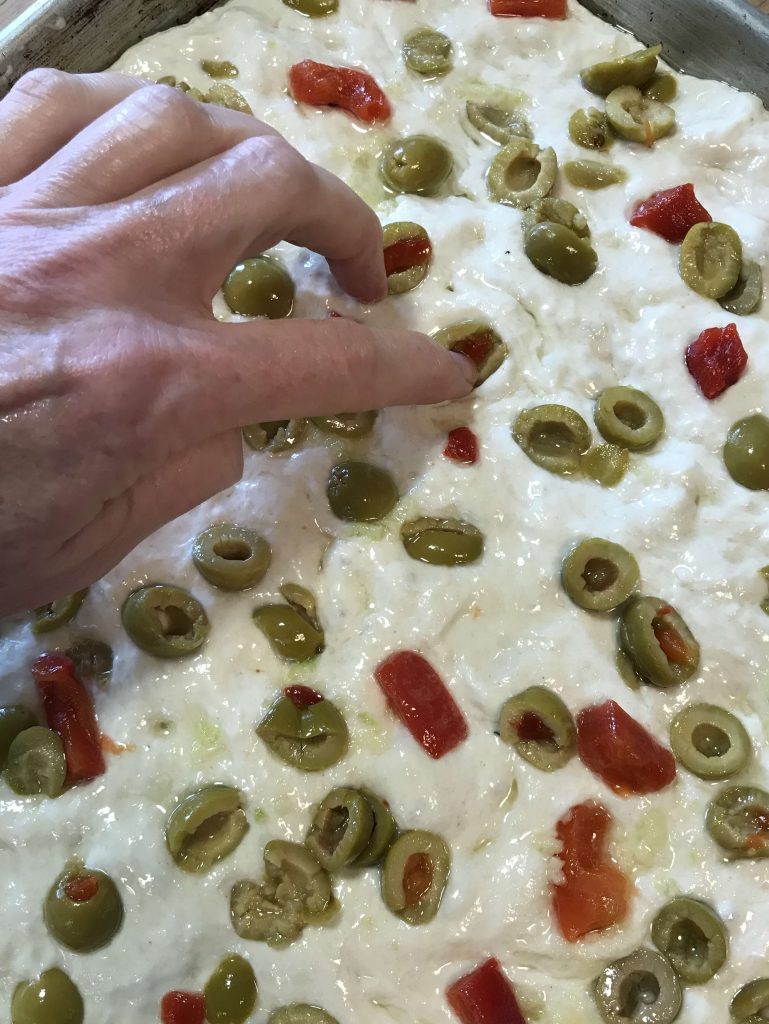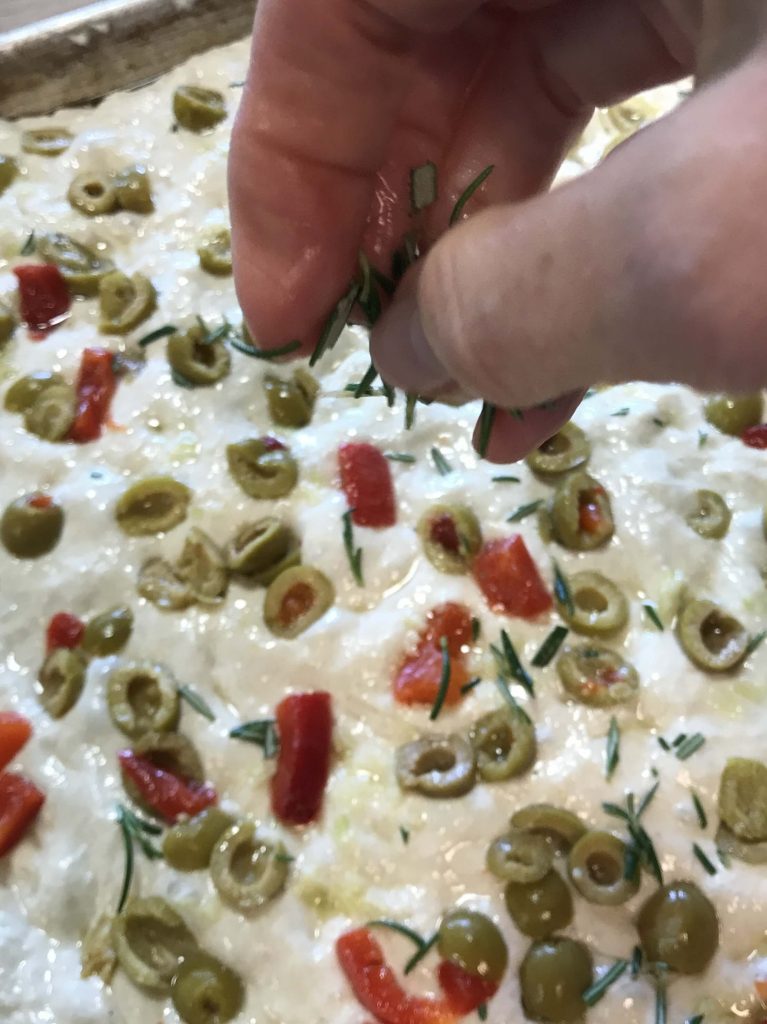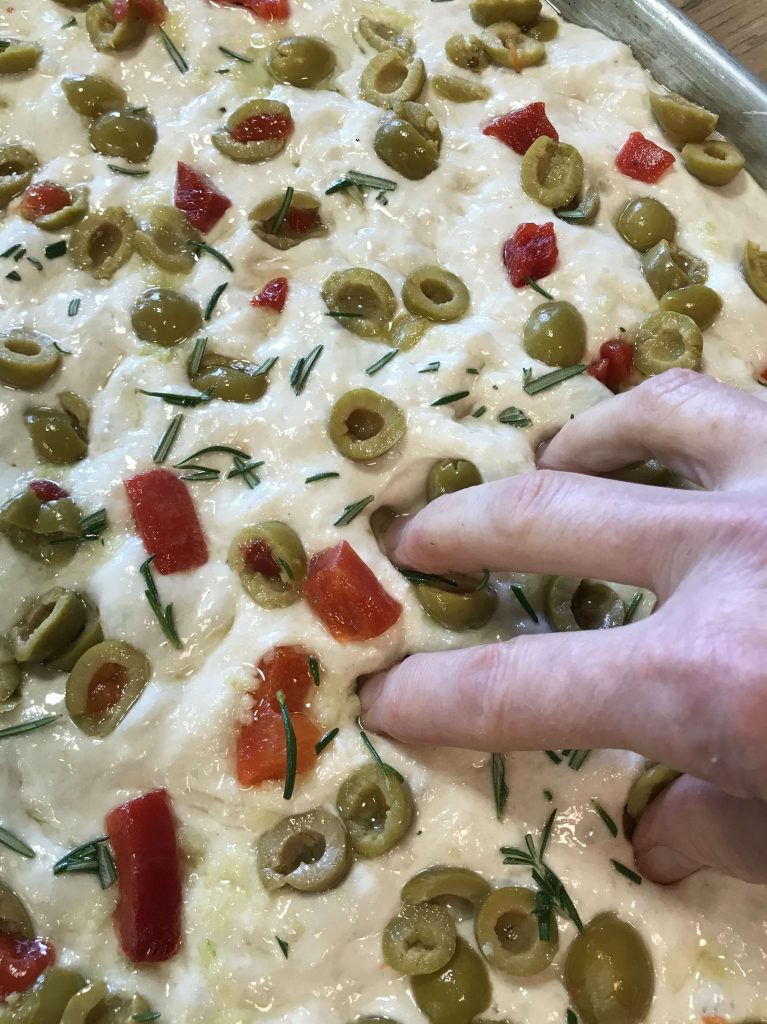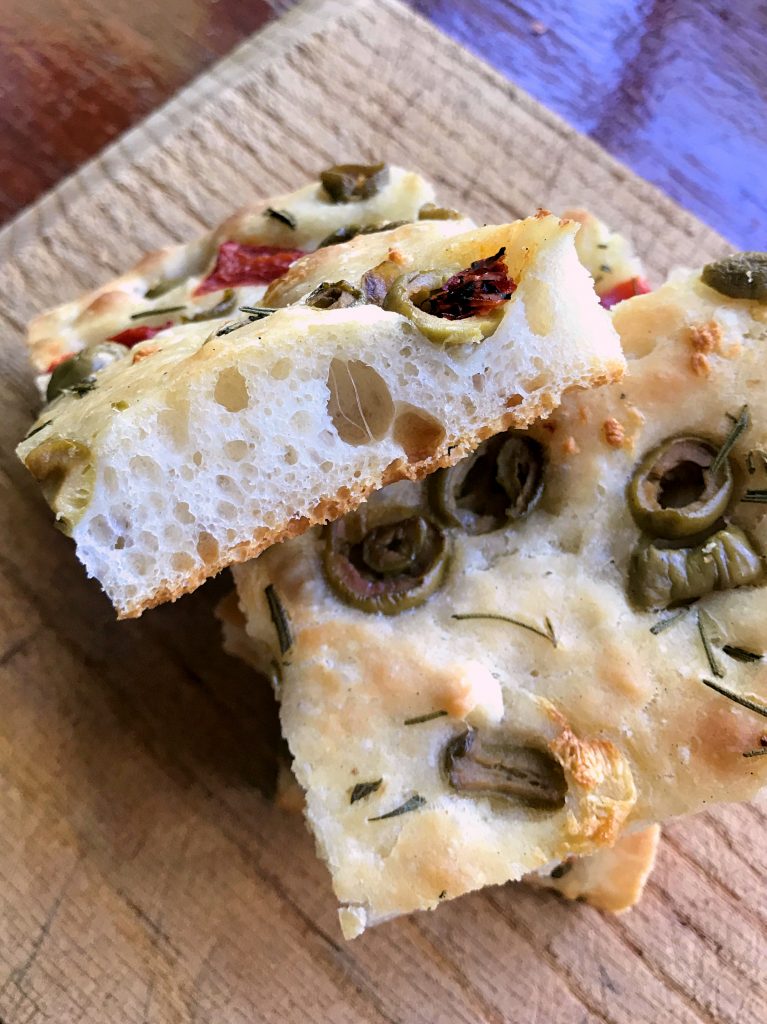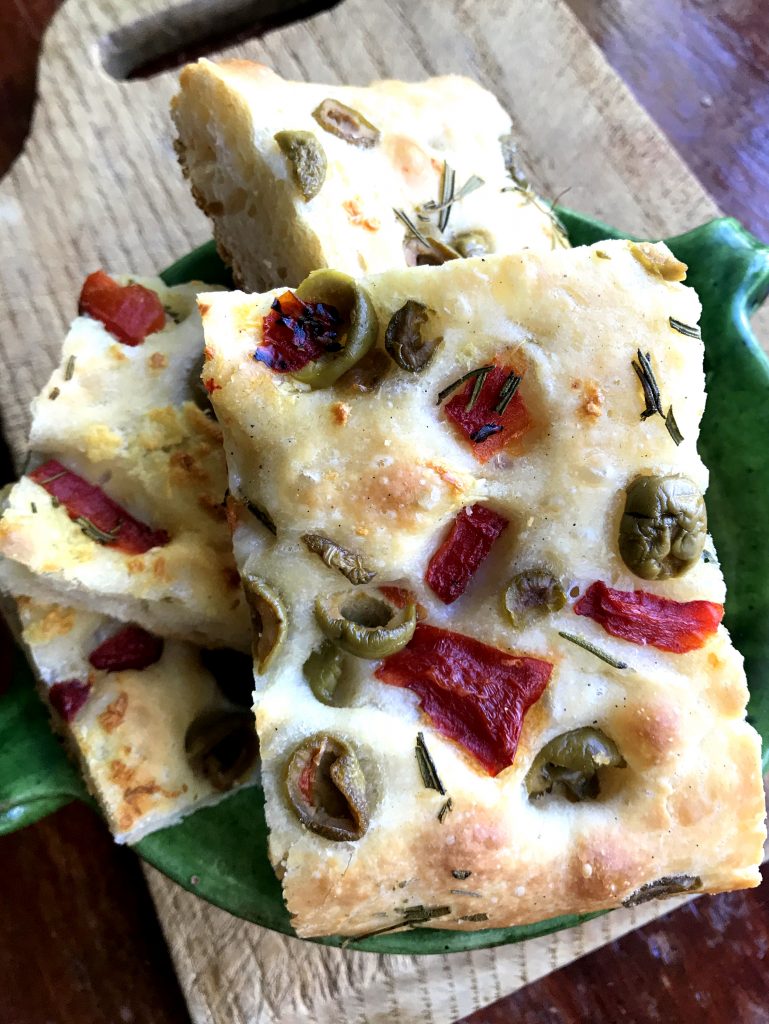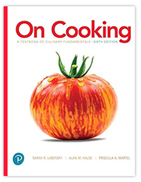Salty, crispy crunchy flatbread like this green olive focaccia with rosemary and garlic calls to me when I want a savory snack or unusual sandwich bread. For months I’ve imagined how this Olive Rosemary Focaccia would taste. My palate craved crunchy and chewy dough squares topped with briny olives.
I made this recipe to use up a jar of briny olives and some excess sourdough starter. (You can make it without the starter, but your focaccia will be smaller. ) The starter adds some flavor and leavening. The recipe also calls for some yeast. Be aware though that too much starter and your focaccia will not brown. The sugars in flour are needed for the browning reaction to occur. Because yeast organisms will consume the sugars in the starter, the focaccia will brown less.
Mix this wet dough in the bowl of your food processor or stand mixer. The more starter you use the stickier the dough will be. Because I fed my starter with bread flour, it was drier than normal. Still my dough was sticky. But this isn’t much of a challenge because you just pour the dough out onto a prepared sheet pan.
I often mark the level of my yeast dough using painter’s tape and the time. This lets me see how active a dough is. And it helps me gauge when the dough has risen enough. Wet dough is more active and rises more quickly and easily than dry dough because moisture helps the yeast come alive. You can see how buoyant it is here.
See how it pours out onto the prepared sheet pan?
If you do not use starter in your dough, it will be firmer. (You will gather the dough up into a ball and press it out gently using your hands to get it to fill the pan.)
Once the dough is in the pan, use moistened fingertips to dimple it. This will give the surface of the focaccia an irregular texture after it bakes.
You can scatter the olives on top of the dough or poke them into the little dimples.
A sprinkle of rosemary, then the focaccia dough is ready to proof before baking.
Then you dimple the dough one more time before baking.
After it bakes in a hot oven, the focaccia with be crisp with an irregular crumb structure like this.
Kitchen Notebook
Many people make sourdough breads at home. This recipe uses a mature and active sourdough starter for the flavor it adds as well as the impact it has on the texture of the bread after baking. You can make this focaccia without it. See the notes in the recipe. You’ll need to use more water and a tad more yeast.
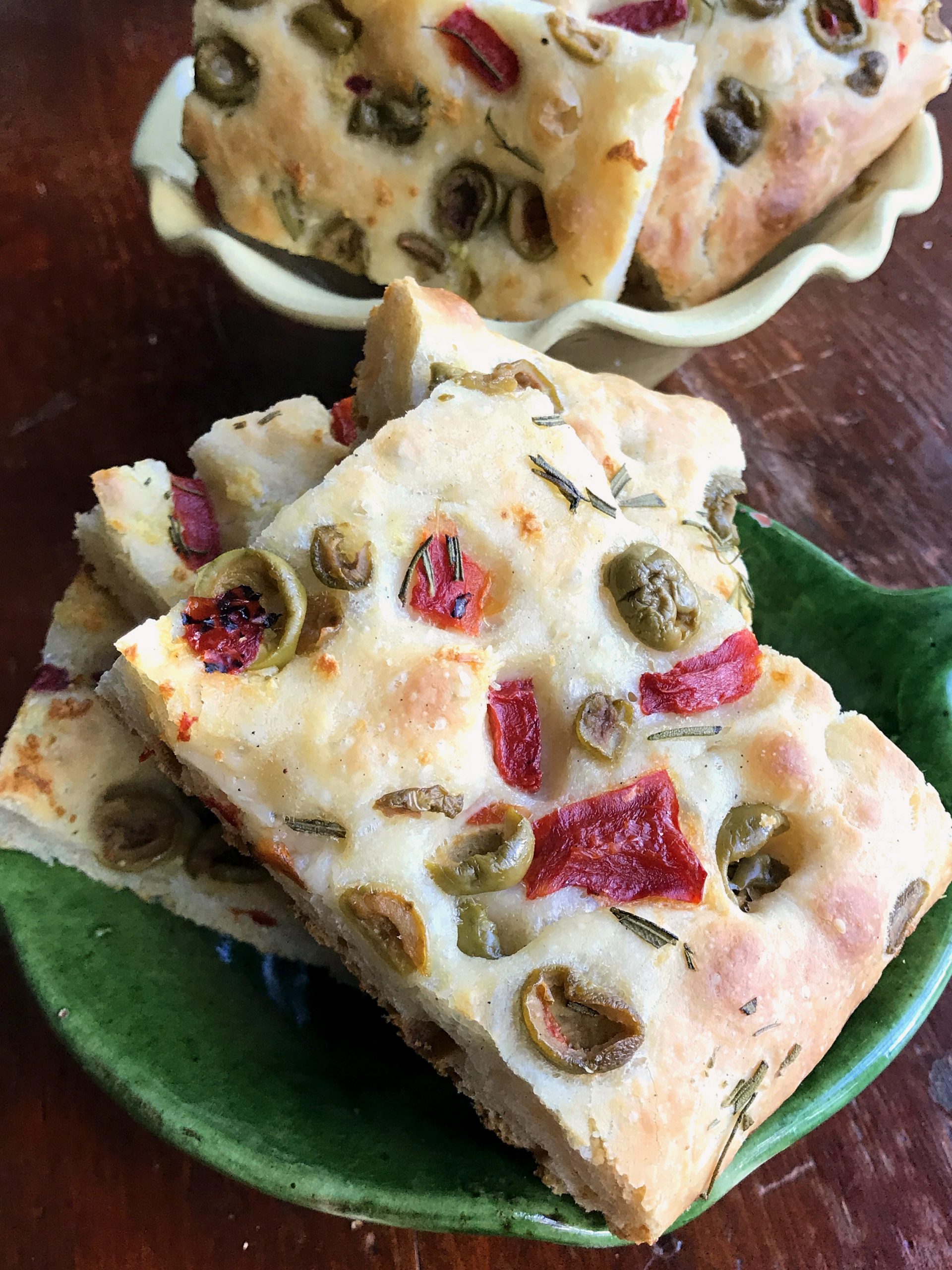
Ingredients
4 cups + 3 Tablespoons (500 grams) all-purpose flour
2 teaspoons (10 grams) fine sea salt
1 teaspoon (3 grams) instant yeast
1 cup (250 grams) active sourdough starter*
2 Tablespoons (30 grams) olive oil
1 ¼ cups + 2 Tablespoons (330 grams) water, temperature controlled
Topping
3 Tablespoons olive oil, as needed for greasing the pan and topping the dough
2 Tablespoons chopped garlic
One 12-ounce jar pitted manzanillo olives and pimientos, such as Goya brand, drained
2 Tablespoons chopped fresh rosemary
1/2 teaspoon coarse salt
Directions
- Place the flour, yeast, starter, and olive oil in the bowl of a food processor fitted with the metal blade. Using an instant-read thermometer, adjust the water temperature so that the combined temperature of the flour and the water is the base temperature of 140°F. With the machine running, pour all the water through the feed tube. Process for a total of 45 seconds.
- Scrape the wet dough onto a floured worktable. Gather it together into a ball using a dough scrape to bring the sticky dough together. Place the dough in a container. Cover and let ferment and rise until double, for approximately 3 hours.
- Place a baking stone on the center rack in the oven. Place a pan for steam on the bottom shelf. Preheat the oven to 500°F.
- Grease a half-sheet tray with olive oil. Scrape the dough out onto the sheet pan taking care not to deflate al of the gas bubbles trapped in the dough. Using moistened fingertips, dimple the dough while pressing it out to reach all corners of the sheet tray.
- Combine the garlic with 2 tablespoons of olive oil. Brush this over the surface of the dough. Scatter the drained olives on top then the rosemary. Drizzle more olive oil on the dough.
- Let the dough proof lightly covered until visibly puffed, for approximately 45 – 60 minutes.
- Right before baking, dimple the surface of the dough again with moistened fingertips. Placed the dough in the oven. Carefully pour ½ cup hot water into the pan on the bottom of the oven to make steam. Bake until the dough is golden brown and crisp, for from 30 – 35 minutes.
- Cut and serve when cool enough to handle.
Notes
Olive Rosemary Focaccia without Starter: To make this Olive Rosemary Focaccia without sourdough starter, make the following adjustments. Use 400 grams (1 ½ cups + 3 Tablespoons) water and 4 grams (1 ¼ teaspoons) instant yeast. The total quantity of dough will be less. Do not press it out to fill the entire sheet pan. Press the dough out into a nice oval that will fill about 2/3 of a standard half-sheet pan.

